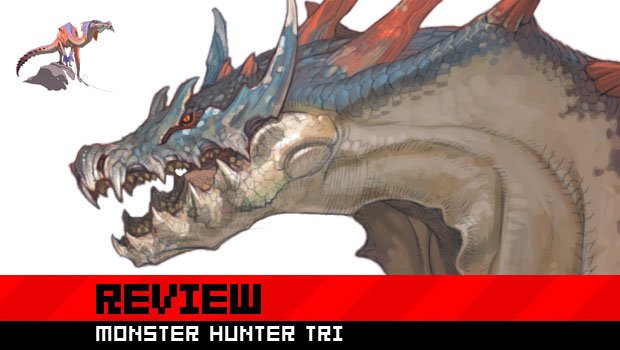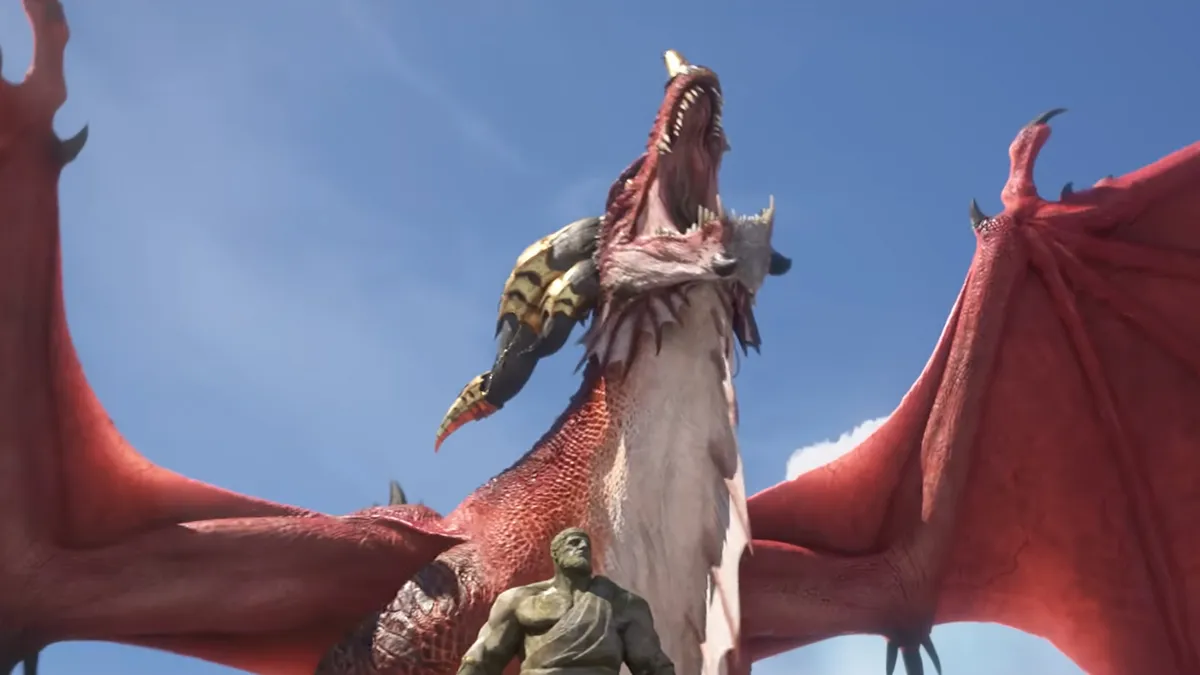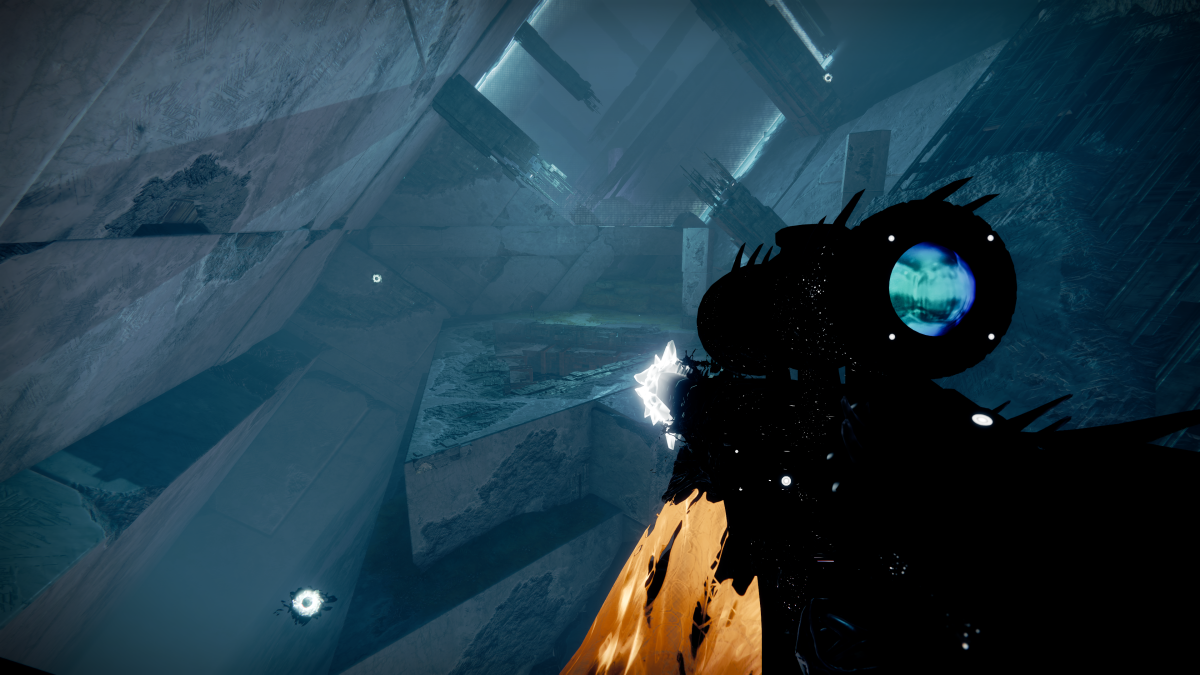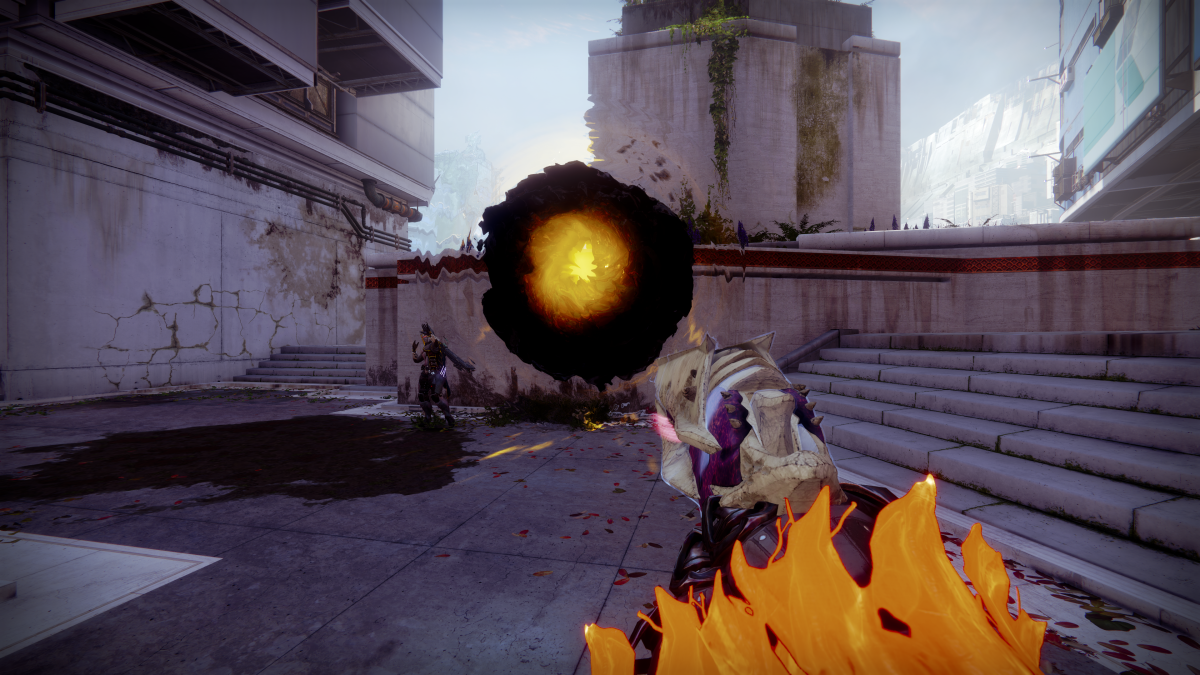Did you play the Monster Hunter Tri demo? If not, don’t bother. It sucked.
Okay, that’s subjective, but it’s definitely fair to say that the Monster Hunter Tri demo did not accurately represent the full game. Imagine if Rockstar put out a demo for the next GTA game that had you inside of a car as soon as you boot it up, and had you drive from point A to point B to point C, and then it ended. Or, if Nintendo put out a demo for Pokémon where you get in two gym battles with a pre-set team of pocket monsters. Sure, that would show off a little of what it’s like to play those games, but it would do almost nothing to give you a sense of what the full experiences entail. It would also make those games look pretty boring and crappy. That’s exactly what the Monster Hunter Tri demo did for Monster Hunter Tri.
The real game isn’t just a series of moderately clunky fights against a few different kinds of made-up dinosaurs. The real Monster Hunter Tri is something that takes the structure of Zelda’s side-quests and combines it with aspects of Shadow of the Colossus, Pokémon, and World of Warcraft. That equation in the Monster Hunter series is the hottest thing going in Japan right now, and with Monster Hunter Tri, the series has a fighting chance of replicating that success in the Western world.
Does Monster Hunter Tri have what it takes to convert you into the Church of Jaggi? Hit the jump to find out.

Monster Hunter Tri (Wii)
Developer: Capcom
Publisher: Capcom
Released: April 20, 2010
MSRP: $49.99
First off, a quick word about the genre that Monster Hunter falls into: though it may look like a standard adventure game, Monster Hunter is very much a sandbox series — a Japanese sandbox series. Unlike Western sandbox games such as GTA and Saints Row, Japanese sandbox games tend to focus on expansive, open, largely unpopulated (by humans, anyway) spaces that provide tons to do, but where nothing ever needs to get done. Collecting stuff, leveling up, exploring, and getting away from real-life humanity is the priority here; doing crimes in bustling recreations of real-life cities would just be missing the point. Dead Rising, Animal Crossing, Shadow of the Colossus, The Wind Waker, and No More Heroes are just a few examples of games that fit the profile of the Japanese sandbox game, but when it comes to to providing that special mix of freedom and escapism, Monster Hunter Tri outdoes them all.
The game puts you in the role of a (you guessed it) person who hunts monsters, but Monster-Hunter-and-Gatherer is more like it. You start the game by creating your character in a Mass Effect/Mii Channel manner. From there, you are introduced to the Monster Hunter World via some beautiful cut-scenes, meet some villagers, leave town, and do as you please. Wander the wilderness, go fishing, catch some bugs, mine precious stones, and oh yeah, beat a bunch of dinosaur-looking things in the head with a hammer (or sword, or multiple other weapons) until death, then cut into them and take their remains back to town, and repeat. That’s your average game of Monster Hunter Tri.

There are a lot of things you can do around town, too: pay cat people to cultivate plants and bugs for you on a little farm, cuddle with a pig, send some sailors out on expeditions, decorate your house, forge new items, change weapons and armor, change your hair style, and, of course, buy stuff. It feels like the old, pre-story-focused days of the JRPG: go to town, rest up, hit the road, kick ass, come home, and lick your wounds. It’s nothing revolutionary, but it works.
Part of that comes from the constant supply of little moments to enjoy. The game provides a constant stream of different items to find, monsters to fight, hidden areas to discover, and surprising interactions with monsters. Oh hey, what are these little cat people doing in this cave? Doing a dance? Awesome. Wait, now they’re smashing me in the head and stealing my stuff? Bastards!
That’s just the cute stuff. You’ll also come across giant bugs, dino-sharks, and most often, huge, huge dragon/dinos that own the world of Monster Hunter with an iron fist. This is the most intimidating and beautiful creature design this side of Shadow of the Colossus. The way these monsters look, act, and think is endlessly entertaining. As you play through the single-player mode, new areas open up as well, and though none of them are particularly massive, the land never runs out of surprises. Swimming is a big part of the game, too, with large underwater areas to explore. One second you’re “ooh-ing” at the massive beasts, the next you’re “aah-ing” at the marvelous backdrops. It’s a non-stop awe-fest.

The team working on the latest Zelda title has been cited for their respect for the visuals of Monster Hunter Tri, and how they are aspiring to make a game as attractive. Though like many Wii games, the textures in Monster Hunter Tri can look a bit janky when seen extremely up close, there is still no denying that the attention to detail in both the environmental and creature design is top of the class. When you’re running through the mountain pass at night, while shooting stars fly overhead and a herd of large, beautiful animals gallop en masse in the valley below, it’s nothing short of magnificent. It’s especially fun when loads of different types of monsters end up hanging out together in the same area. You’ll have a raptor-like Jaggi biting the ass of the heavily armored Rhenoplos. So much care and attention was put into this game’s world; you’ll really feel like you’re living among the beasts.
Just as much care was put into Monster Hunter Tri‘s gameplay. Though you don’t capture and train monsters like you do in Pokémon, you do make weapons and armor out of them, and the level of detail and variation in the “evolution trees” of each weapon/armor is staggering. This game has tons of different weapons and armor, with the potential for elemental properties for added flair. There are seven types of weaponry in Monster Hunter Tri: sword and shield, great sword, hammer, lance, switch axe (an axe that can turn into a sword), long sword, and bow gun (light, medium, and heavy barreled). All seven play very differently from each other. They almost feel like Street Fighter II‘s original seven characters (or eight, if you count Ryu and Ken as two different ones) in their level of variation.

The single-player mode is perfectly engaging. For storyline, we get a low-intensity tale of a town that needs saving from a giant sea monster, among other natural enemies. Your real motivation in the single-player comes from curiosity about the game’s world, and amassing a plethora of cool weapons/armor/etc. That’s all good stuff, but what makes Monster Hunter Tri really special, especially for the Wii, takes place online. The game allows you to take on quests with three other strangers at a time, chosen from a cast of thousands of online strangers, with no need for friend codes.
That’s right, Capcom somehow got around Nintendo’s friend code system. There is a little warning before entering the game’s online city about not giving out your phone number and address to people you meet online, but that’s it. There’s no more protection than that. Teaming up with strangers of different levels of experience is the best way to see new and exciting stuff in the game, and to pick up some awesome new gear along the way — all of which can be brought back to the single-player experience. You can interact with strangers with in-game texting, a Wii-compatible keyboard, or the Wii Speak speaker/microphone combo. The in-game keyboard is a little clunky, and doesn’t allow for pointer controls like those found in Animal Crossing: City Folk, but other than that, it’s pretty much flawless. Also, no lag.

This lack of online protection and hand-holding is surprising, and speaks to the game’s overall philosophy. In fact, that’s the one thing about Monster Hunter Tri that may turn people off. This game barely tries to help you out. Unlike many games these days, your character doesn’t have a built-in healing factor, and there is often a high price for carelessness in combat. The game also isn’t shy about throwing over-powered monsters your way before you’re tough enough to take them on, or letting you sign up for a quest that you have no chance of completing. After the initial set of quests, you’re rarely given much direction or instruction as to where to go or what you’ll need to succeed, which gives the game a certain believability not found in many online-intensive titles.
The most striking area where the game leaves you on your own is in actual combat. There is no lock-on, which really forces you to hone your skills on your own. Knowing which weapon is right for which quest will be sure to make or break the career of many a monster hunter, as will the drive to learn the behaviors, strengths, and weaknesses of the monsters you’re hunting. It all takes place in real time. Like in Resident Evil 5, there is no pausing the action in the inventory screen. Dodging, charging up attacks, setting traps, retreating, accessing items in your inventory, barbecuing some meat, all while a fire breathing dragon with giant cobra-heads for wings stomps around and scares the crap out of you, is a required skill. To pull off all that, the game’s controls will need to become second nature.

That’s another one of the game’s strengths: control options. Not only does each weapon control and feel differently from each other, but there are three overall control schemes you can choose from before starting up a game. The Wii-Remote-and-Nunchuk scheme is definitely playable and for motion control enthusiasts it may actually be preferred, but it really feels like the game was built to be played with the optionally-packed-in Classic Controller Pro. The Classic Controller gets two different control schemes: one that’s button-intensive, and one that’s analog stick-intensive. Mini review-within-a-review time: the Classic Controller Pro is awesome — it’s more light and comfortable than any other analog pad on the market, Wii or otherwise.
The last thing thing you really should know about Monster Hunter Tri is how truly endless it feels. As a wild guess, someone may be able to speed-run through all the quests in the single-player in 30 hours or so, but that’s being really generous. For people who want to get the most out of the game, it’ll take much longer than that to really see what the game has to offer. It’s common to hear a Monster Hunter fan say they’ve put hundreds of hours into the game, and they’re still making gains and seeing new things. Capcom has already promised to make new quests available online free of charge. People pay a monthly subscription fee for this stuff in Japan, but we get it for free.

Fans of Japanese-style sandbox games need to buy Monster Hunter Tri. The only bad thing about it I can think of is that it really doesn’t do anything to try to win over today’s lazy, lock-on/healing factor-reliant action gamer. Also, the game’s local co-op mode is a little lacking. It only allows you to join with one local player and take on one of the game’s “bosses” inside an arena, disallowing the option to explore or go item-farming. Other than those tiny complaints, everything else about the game pretty much nails it. For $50 ($60 with the Classic Controller Pro), Monster Hunter Tri provides a World of Warcraft-quality experience without the $14.99 monthly subscription. That makes Monster Hunter Tri the best value going in MMORPGs today. Add to that a more-than-adequate single-player mode, and you get a…
Score: 9.0 — Superb (9s are a hallmark of excellence. There may be flaws, but they are negligible and won’t cause massive damage to what is a supreme title.)





